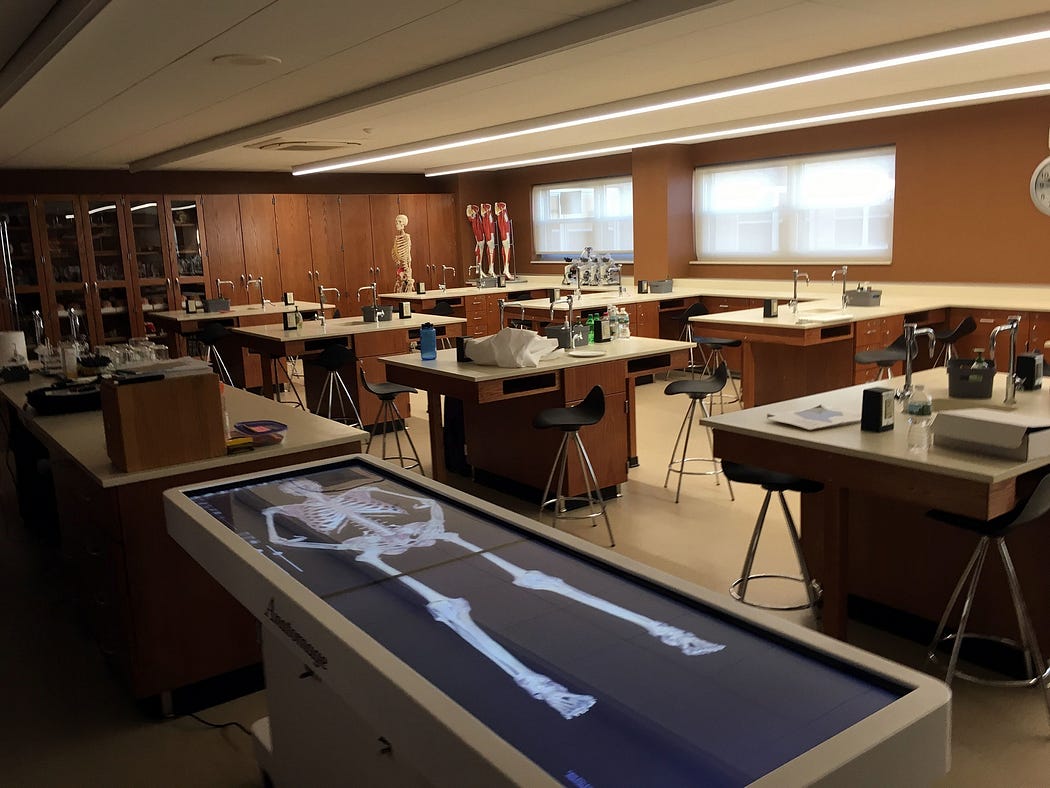In recent years, technological advancements have revolutionized various fields, including medical education. Two notable innovations in this regard are the virtual anatomy dissection table and the 3D anatomy table. These tools have significantly impacted how anatomy is taught and learned, providing students and educators with immersive, interactive, and detailed anatomical experiences. This article explores the features, benefits, and implications of these cutting-edge tools in medical education.
The Virtual Anatomy Dissection Table
A virtual anatomy dissection table is a sophisticated, digital tool that allows users to explore the human body in a highly interactive manner. Unlike traditional dissection, which involves physical specimens, a virtual dissection table uses digital images and 3D models to simulate the dissection process. This tool is equipped with high-resolution touchscreens and advanced software that enables users to manipulate anatomical structures with precision.

Key Features
- High-Resolution Imaging: Virtual dissection tables use high-resolution images obtained from real human cadavers. These images are layered to create a comprehensive 3D model of the human body.
- Interactive Interface: The touch-sensitive interface allows users to zoom, rotate, and dissect the virtual body, providing a hands-on learning experience.
- Layered Visualization: Users can view different layers of the body, from the skin down to the bones, muscles, organs, and even microscopic structures like nerves and blood vessels.
- Annotation and Notes: Educators and students can annotate and take notes directly on the digital models, facilitating better understanding and retention.
- Cross-Sectional Views: The table can display cross-sectional views of the body, aiding in the study of anatomical relationships and spatial orientation.
The 3D Anatomy Table
Similar to the virtual dissection table, the 3D anatomy table provides an immersive learning experience by rendering detailed three-dimensional models of the human body. These tables often integrate virtual reality (VR) and augmented reality (AR) technologies to enhance the visualization and interaction capabilities.

Key Features
- Immersive Experience: VR and AR technologies allow students to virtually “enter” the human body, offering a unique perspective on anatomical structures and their functions.
- Realistic Models: 3D anatomy tables use highly realistic models that mimic real anatomical structures’ texture, color, and appearance.
- Dynamic Simulations: These tables can simulate physiological processes, such as blood flow, muscle contractions, and organ functions, providing a dynamic learning experience.
- Interactive Learning: Students can manipulate the models in real time, fostering active learning and better comprehension.
- Collaboration and Accessibility: 3D anatomy tables often support collaborative learning, allowing multiple users to interact with the models simultaneously. Additionally, they provide remote access capabilities, enabling distance learning.
Benefits of Medical Education
- Enhanced Understanding: These tools’ detailed and interactive nature helps students grasp complex anatomical concepts more effectively than traditional methods.
- Safe and Ethical Learning: Virtual and 3D anatomy table eliminate the need for physical cadavers, addressing ethical concerns and reducing the costs and logistical challenges associated with traditional dissection.
- Repeatability: Unlike physical dissection, which is a one-time process, virtual dissection allows for repeated practice and exploration, aiding in mastery of the material.
- Supplemental Resource: These tools serve as excellent supplements to traditional learning methods, providing additional resources for students to study anatomy comprehensively.
The integration of virtual anatomy dissection tables and 3D anatomy tables in medical education represents a significant leap forward in how anatomy is taught and learned. These technologies offer unparalleled opportunities for interactive, detailed, and immersive learning experiences, making them invaluable tools for modern medical education. As these tools continue to evolve, they will undoubtedly play an increasingly central role in training the next generation of healthcare professionals.
For more information please visit: https://www.mavericsolution.com/medical.html

